Ocean
What Animals Live in the Deep Ocean?

Key Takeaways
- The deep ocean is home to unique creatures that have adapted to survive extreme conditions.
- Animals like anglerfish, giant squid, and vampire squid thrive in total darkness and intense pressure.
- Deep-sea creatures use features like bioluminescence and slow metabolisms to endure their environment.
- Conservation of the deep ocean is crucial as these ecosystems face threats like mining and overfishing.
What Animals Live in the Deep Ocean?
Imagine plunging into the ocean’s depths, where sunlight can’t reach, and strange, otherworldly creatures thrive in darkness. The deep ocean is one of the most mysterious places on Earth, with animals so unique that they seem almost alien. But what exactly lives down there? Let’s dive into this fascinating world to find out!
Characteristics of the Deep Ocean
The deep ocean is unlike any other place on Earth. It starts where sunlight fades—about 200 meters (656 feet) below the surface—and extends down to depths of 11,000 meters (36,000 feet) in ocean trenches. Here’s what makes it so unique:
- Total Darkness: Sunlight doesn’t penetrate these depths, so animals rely on other senses or create their own light.
- Extreme Pressure: The deeper you go, the greater the pressure. Animals must have special adaptations to withstand this.
- Cold Temperatures: The water is near freezing, so creatures have slow metabolisms to conserve energy.
How Do Deep-Sea Animals Survive?
Animals living in the deep ocean have developed amazing ways to survive these harsh conditions:
- Bioluminescence: Some animals, like the anglerfish, produce their own light to attract prey or communicate.
- Flexible Bodies: Many deep-sea creatures, such as jellyfish, have soft, squishy bodies to handle extreme pressure.
- Efficient Energy Use: These animals eat less and move slowly to make their energy last.


Fascinating Deep-Sea Animals
The deep ocean is full of fascinating creatures. Here are some of the most incredible ones:
1. Anglerfish
- These fish are famous for the glowing lure on their heads, which they use to attract prey.
- Females are much larger than males, and males often latch onto females as parasites.

2. Giant Squid
- One of the largest invertebrates, it can grow up to 40 feet long!
- Rarely seen alive, giant squid are known from the deep scars they leave on sperm whales during battles.

3. Vampire Squid
- Despite its spooky name, it’s harmless and feeds on detritus (dead organic matter).
- Its webbed tentacles and bioluminescent spots make it a sight to behold.

4. Deep-Sea Shrimp
- These tiny creatures survive on the ocean floor by scavenging organic material.
- Some live near hydrothermal vents, where they feed on bacteria.

5. Giant Isopod
- A relative of the pill bug, these oversized crustaceans grow up to 16 inches long!
- They live on the seabed and feast on whale carcasses and other dead marine life.

6. Dumbo Octopus
- With flapping ear-like fins, these adorable creatures were named after Disney’s Dumbo.
- They live at depths of over 13,000 feet and eat small crustaceans and worms.
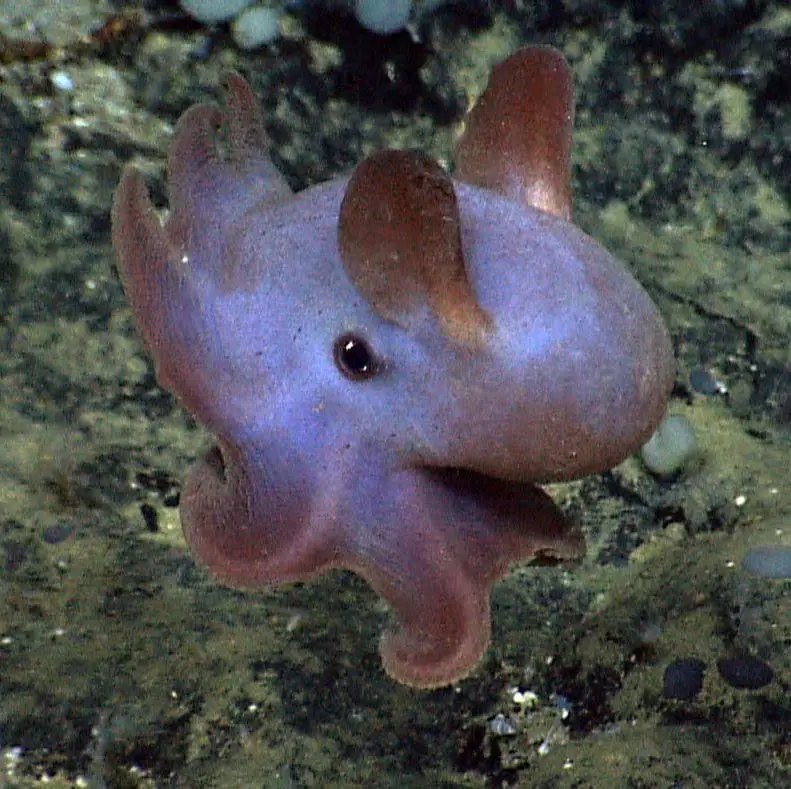
How Do Scientists Study Deep-Sea Life?
Studying deep-sea animals isn’t easy. Scientists use advanced technology to explore these remote areas:
- ROVs (Remotely Operated Vehicles): These machines are sent to extreme depths to capture footage and samples.
- Submersibles: Human-operated submarines allow researchers to observe deep-sea life directly.
- Sonar Mapping: This helps identify the seafloor’s features and potential habitats for deep-sea animals.



Why Should We Protect the Deep Ocean?
The deep ocean is under threat from human activities:
- Deep-Sea Mining: Mining for minerals damages fragile ecosystems.
- Overfishing: Many deep-sea fish are slow to reproduce, making them vulnerable to overfishing.
- Climate Change: Rising ocean temperatures and acidification harm deep-sea habitats.
Protecting these ecosystems is crucial not just for the animals but for the planet’s health.

Image Article Source : https://www.pinterest.com/
FAQs
What is the deepest-dwelling fish ever found?
The snailfish holds the record for living at depths of over 8,000 meters (26,000 feet).
Are there predators in the deep ocean?
Yes! Many deep-sea creatures, like the anglerfish and gulper eel, are skilled predators.
Can humans survive in the deep ocean?
No, the extreme pressure and lack of oxygen make it impossible without special equipment.
Conclusion
The deep ocean is a world of mystery, full of extraordinary animals that have adapted to survive in one of the most extreme environments on Earth. From glowing fish to giant squids, these creatures remind us of the incredible diversity of life on our planet. While we’ve learned so much about the deep ocean, there’s still so much more to discover. Let’s work together to protect these fascinating ecosystems for future generations!
Ocean
Coral Reefs in the Sea: A Vital Underwater World

Key Takeaways
- Coral reefs are often called the “rainforests of the sea” due to their incredible biodiversity.
- They protect coastlines, support marine life, and contribute to economies through tourism and fishing.
- Threats include climate change, pollution, and overfishing, making conservation efforts crucial.
Imagine diving into crystal-clear waters, surrounded by vibrant colors, exotic fish, and intricate coral formations. This magical world is home to coral reefs—one of nature’s most breathtaking creations. But coral reefs aren’t just beautiful; they’re essential for the health of our oceans and planet. Let’s dive deep into what they are, why they matter, and how we can help protect them.
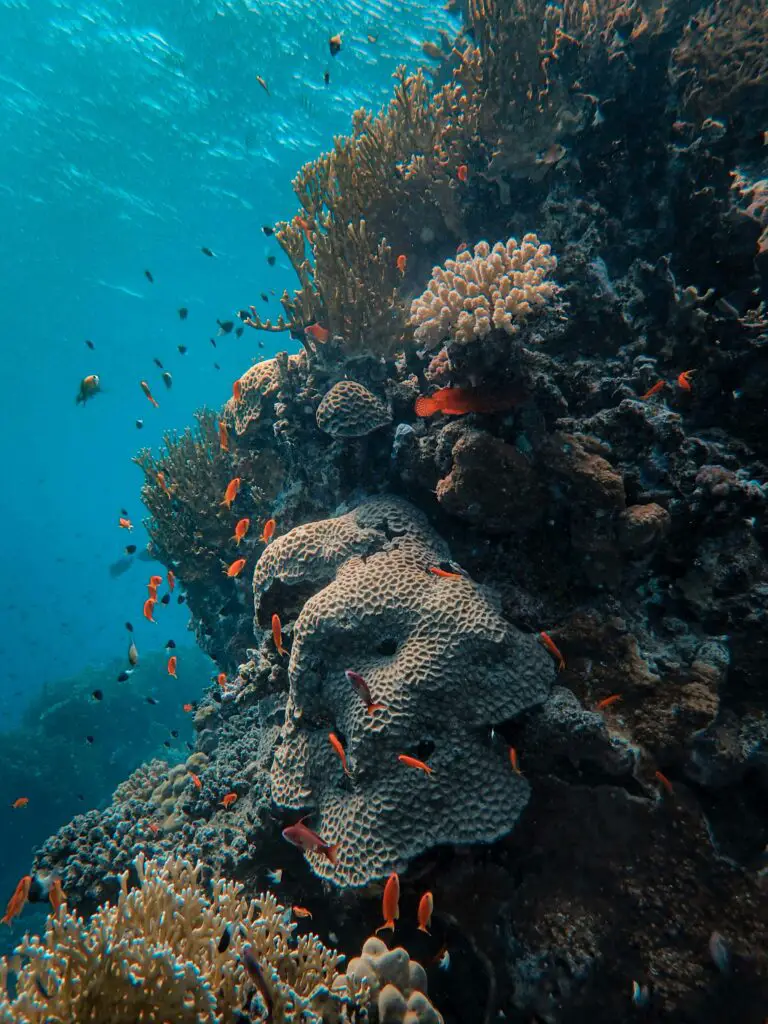
What Are Coral Reefs?
Coral reefs are large underwater structures made from the skeletons of tiny animals called coral polyps. These polyps build reefs over thousands of years by secreting calcium carbonate, which forms their hard, protective skeletons.
There are four main types of coral reefs:
- Fringing Reefs: Found close to the shore and directly attached to the coastline.

- Barrier Reefs: Located further offshore and separated from the coast by a lagoon.

- Atolls: Ring-shaped reefs that encircle a lagoon, often in the middle of the ocean.
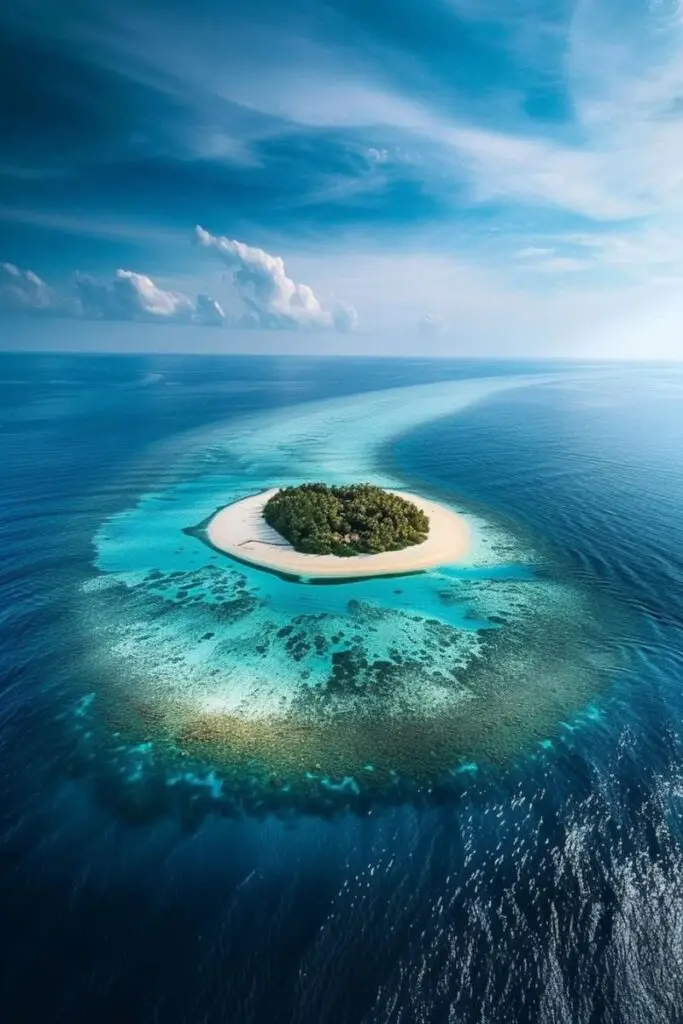
- Patch Reefs: Isolated, small reef structures often found within lagoons or atolls.

Coral reefs thrive in warm, shallow waters where sunlight can reach them. This sunlight is crucial for the algae, called zooxanthellae, that live inside corals and provide them with energy through photosynthesis.
Importance of Coral Reefs
Coral reefs aren’t just stunning underwater formations—they’re vital to life on Earth. Here’s why:
1. Home to Marine Life
Coral reefs are some of the most diverse ecosystems on the planet. They provide shelter, food, and breeding grounds for nearly 25% of all marine species, including fish, mollusks, and crustaceans.
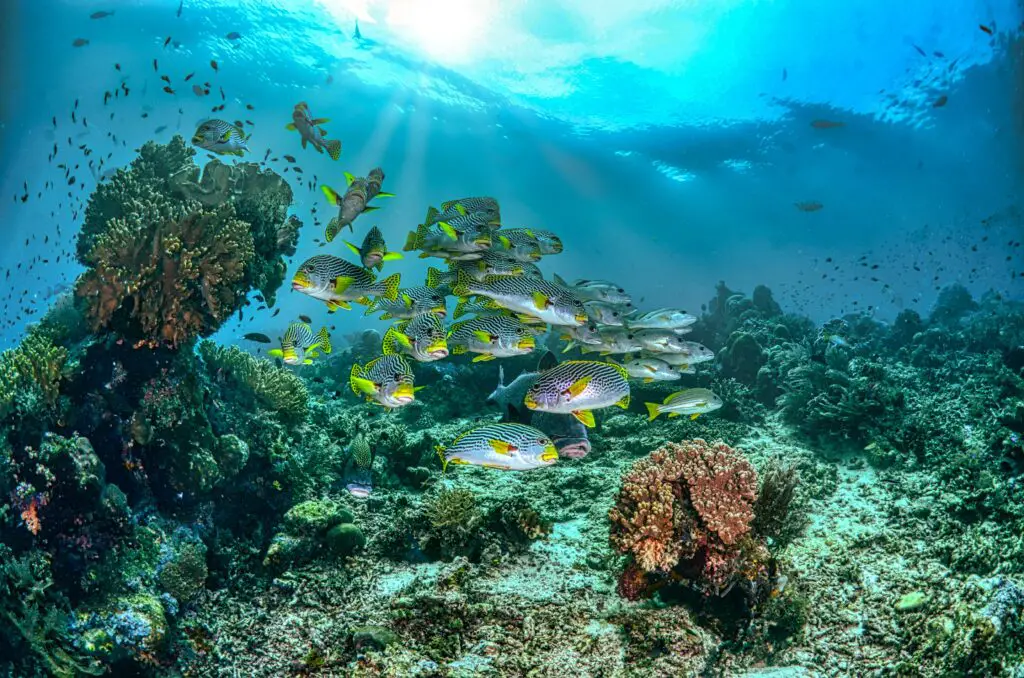
2. Protection for Coastlines
Reefs act like natural barriers, absorbing the force of waves and storms. This helps protect coastal areas from erosion, flooding, and storm damage.

3. Economic Contributions
Coral reefs support fishing and tourism industries, generating billions of dollars annually. They provide livelihoods for millions of people, especially in coastal communities.
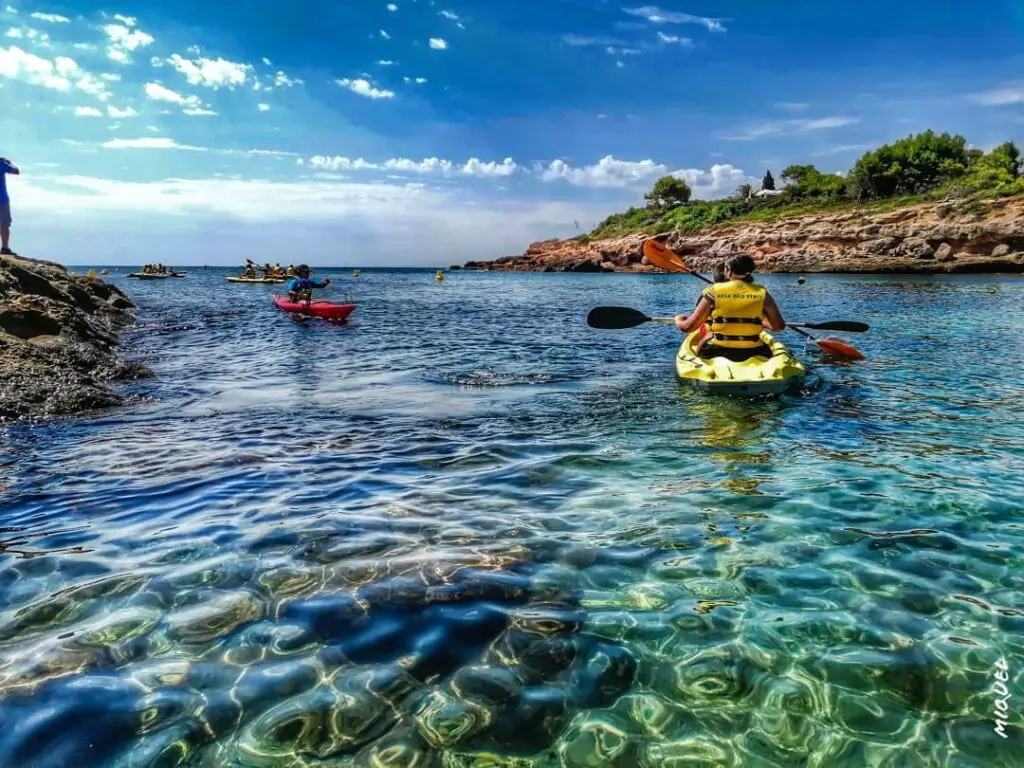
4. Carbon Storage
Healthy coral reefs help regulate the Earth’s carbon dioxide levels by storing carbon and reducing its impact on global warming.

Threats to Coral Reefs
Despite their importance, coral reefs are under serious threat. Here are the major challenges:
1. Climate Change
Rising sea temperatures cause coral bleaching, where corals expel their algae and turn white. Without algae, corals lose their energy source and often die.
2. Pollution
Plastic waste, oil spills, and agricultural runoff poison coral reefs. Sediment from deforestation can also block sunlight, preventing photosynthesis.
3. Overfishing
Unsustainable fishing practices disrupt the balance of marine ecosystems. Destructive methods, like blast fishing, can physically destroy reef structures.
4. Ocean Acidification
Increased carbon dioxide in the atmosphere makes oceans more acidic. This weakens coral skeletons, making them more fragile and susceptible to damage.
Conservation of Coral Reefs
Protecting coral reefs is a global responsibility. Here’s how we can make a difference:
1. Restoration Efforts
Scientists are developing techniques to grow corals in nurseries and transplant them onto damaged reefs. Artificial reefs made from sustainable materials can also provide new habitats for marine life.
2. Sustainable Tourism
Tourists can support conservation by choosing eco-friendly dive operators, avoiding touching corals, and reducing their plastic waste.
3. Government and Global Action
International agreements like the Paris Climate Accord aim to reduce emissions and slow global warming. Local governments can also enforce fishing regulations and create marine protected areas.
4. Individual Action
Everyday choices matter. Reduce single-use plastics, conserve water, and support organizations working to protect coral reefs.
Fascinating Facts About Coral Reefs
- The Great Barrier Reef in Australia is the largest coral reef system in the world, spanning over 2,300 kilometers.
- Coral reefs cover less than 1% of the ocean floor but support over 25% of marine species.
- Some corals glow under UV light due to proteins in their tissues—a phenomenon called biofluorescence.
FAQs About Coral Reefs
Q: What are coral reefs made of?
A: Coral reefs are built by coral polyps, which secrete calcium carbonate to form their skeletons.
Q: Why are coral reefs important to humans?
A: They provide food, livelihoods, coastal protection, and are vital to marine biodiversity.
Q: How can we protect coral reefs?
A: By reducing pollution, practicing sustainable tourism, and supporting conservation efforts.
Conclusion
Coral reefs are more than just underwater treasures—they’re the backbone of marine ecosystems and protect our coasts and climate. But with threats like climate change and pollution, their survival is at risk. Protecting these vital ecosystems requires effort from all of us, whether it’s through global action or simple everyday choices.
Let’s commit to preserving coral reefs, ensuring they thrive for generations to come.
Ocean
Oceans in the World and Their Information & Locations
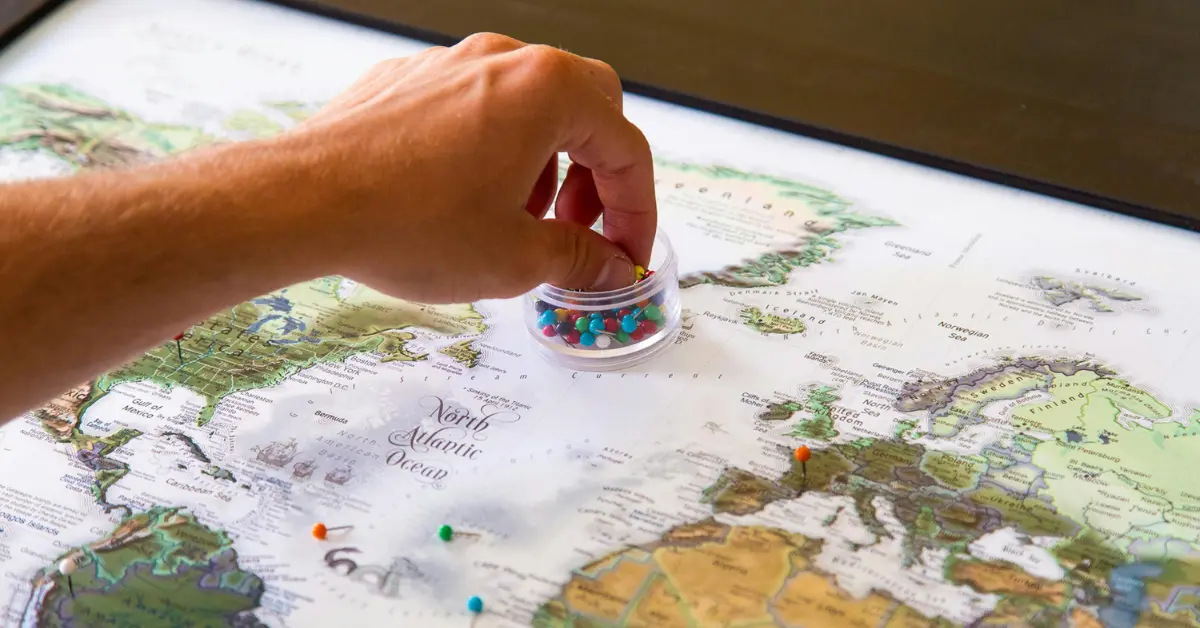
Key Takeaways
- Earth has five major oceans: Pacific, Atlantic, Indian, Southern, and Arctic.
- Each ocean has a unique location, size, and features.
- Oceans play a crucial role in regulating climate and supporting life.
- Human activities, like pollution and overfishing, threaten these vast water bodies.
- Conservation efforts are vital to preserving ocean ecosystems.
Do you know that oceans cover over 70% of the Earth’s surface? These enormous water bodies shape the world we live in—impacting weather, supporting life, and driving the global economy. But how much do you really know about the oceans? Where exactly are they located, and why are they so important? Stick around, because we’re diving deep into the wonders of the world’s oceans.
The Five Major Oceans of the World
The Earth’s oceans are divided into five main parts, each with unique features and locations. Let’s explore them one by one.
The Pacific Ocean: The Mighty Giant
The Pacific Ocean is the largest ocean, covering about 63 million square miles. It stretches from the western coasts of North and South America to Asia and Australia in the east.
- Location: Between Asia, Australia, and the Americas.
- Key Features:
- Mariana Trench, the deepest point on Earth, lies here.
- Known for its “Ring of Fire,” an area with frequent earthquakes and volcanic eruptions.
- Importance:
- The Pacific supports rich biodiversity, including coral reefs like the Great Barrier Reef.
- It’s a crucial route for international trade.


The Atlantic Ocean: A Bridge Between Continents
The Atlantic Ocean connects the Americas with Europe and Africa. It is the second-largest ocean, covering 41 million square miles.
- Location: Between the Americas, Europe, and Africa.
- Key Features:
- The Mid-Atlantic Ridge, an underwater mountain range, runs down the center.
- Famous for the Bermuda Triangle and its mysterious legends.
- Importance:
- Historically vital for exploration and colonization.
- Plays a major role in global shipping and fishing industries.


The Indian Ocean: The Warm Water Treasure
The Indian Ocean is the third-largest ocean and is surrounded by Asia to the north, Africa to the west, and Australia to the east.
- Location: Between Asia, Africa, and Australia.
- Key Features:
- Home to unique marine species and coral reefs.
- Influenced by monsoon winds, which are vital for agriculture in surrounding regions.
- Importance:
- Rich in marine resources like fish and oil.
- A key trade route for many countries.
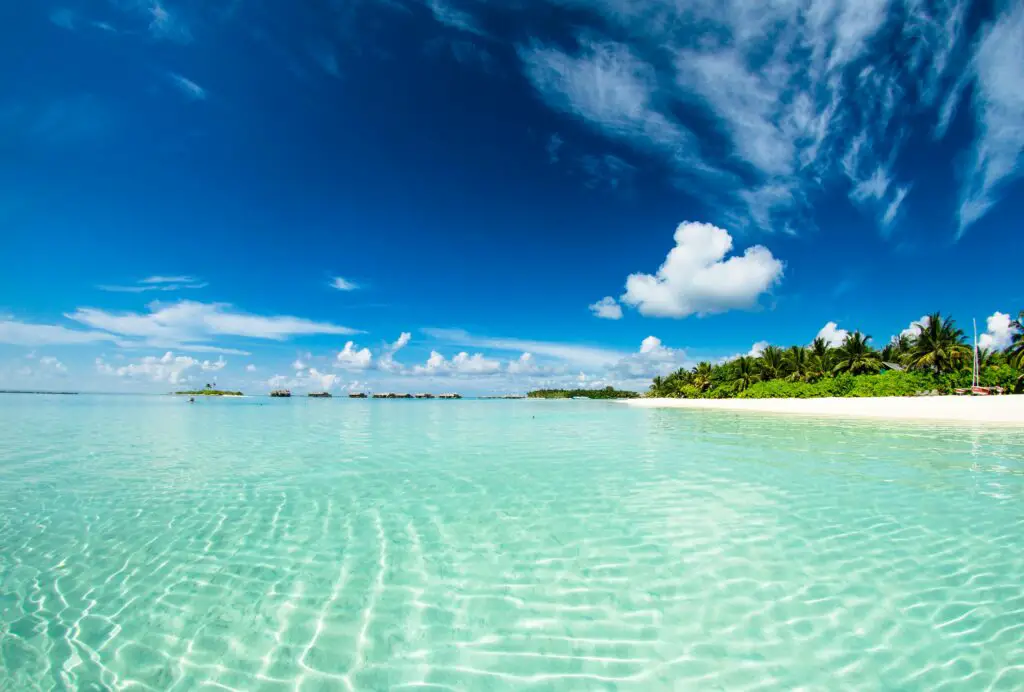

The Southern Ocean: The Frozen Frontier
The Southern Ocean, also called the Antarctic Ocean, surrounds Antarctica and connects the Pacific, Atlantic, and Indian Oceans.
- Location: Encircling Antarctica.
- Key Features:
- Known for its freezing temperatures and icy waters.
- Home to unique species like penguins and seals.
- Importance:
- Helps regulate Earth’s climate through the Antarctic Circumpolar Current.
- Plays a key role in the global carbon cycle.


The Arctic Ocean: The Icy Wonder
The Arctic Ocean is the smallest and shallowest ocean, located in the Arctic Circle.
- Location: Surrounds the North Pole, bordered by North America, Europe, and Asia.
- Key Features:
- Covered in sea ice for most of the year.
- Important for studying climate change due to its melting ice caps.
- Importance:
- Rich in marine life adapted to extreme cold, like polar bears and narwhals.
- Contains vast untapped natural resources, including oil and gas.


Why Are Oceans Important?
Oceans are more than just massive water bodies—they’re lifelines for the planet.
- Climate Regulation: Oceans absorb heat and distribute it through currents, keeping the planet’s temperature stable.
- Oxygen Production: Marine plants like phytoplankton produce more than 50% of the oxygen we breathe.
- Biodiversity: Home to countless species, many of which are still undiscovered.
- Economic Value: Oceans support industries like fishing, tourism, and transportation.
Challenges Facing the Oceans
Unfortunately, human activities are putting the health of oceans at risk.
- Pollution: Plastic waste and oil spills contaminate marine habitats.
- Overfishing: Depletes fish populations and harms ecosystems.
- Climate Change: Causes sea level rise and ocean acidification, threatening marine life.
What Can We Do?
- Reduce plastic use and recycle waste.
- Support sustainable fishing practices.
- Advocate for policies to protect marine habitats.
FAQs
Which is the largest ocean in the world?
The Pacific Ocean is the largest, covering about 63 million square miles.
How many oceans are there?
There are five major oceans: Pacific, Atlantic, Indian, Southern, and Arctic.
Why are oceans important to us?
Oceans regulate the climate, produce oxygen, support biodiversity, and provide food and resources.
What is the smallest ocean?
The Arctic Ocean is the smallest and shallowest of the five oceans.
Conclusion
Oceans are essential for life on Earth, offering countless benefits and sustaining diverse ecosystems. However, they face significant threats from human activities. By understanding their importance and taking steps to protect them, we can ensure a healthier planet for future generations. Let’s treat our oceans with the care they deserve!
Ocean
Where Are the 10 Most Beautiful Beaches in the World?

If you’re someone who loves the sound of waves, the feel of soft sand underfoot, and endless horizons of clear blue water, this is the list for you. Beaches are some of the most breathtaking places on Earth, but not all beaches are created equal. Some stand out for their unique landscapes, crystal-clear waters, or untouched beauty.
So, where can you find the world’s most beautiful beaches? Let’s dive in and explore the top 10 destinations that you’ll want to add to your travel bucket list.
Key Takeaways
- These beaches are known for their unmatched natural beauty, from turquoise waters to unique sand colors.
- Many of these beaches also offer unforgettable activities like snorkeling, diving, and hiking.
- Learn about conservation efforts and tips for responsible tourism when visiting these stunning spots.
What Makes a Beach Truly Beautiful?
Not every beach is considered “beautiful.” What sets the best apart are their unique features:
- Pristine Waters: Clear, turquoise, or deep blue waters that look straight out of a dream.
- Soft Sands: Whether powdery white or uniquely colored, the sand plays a big role in a beach’s charm.
- Unique Geography: Think dramatic cliffs, hidden coves, or coral reefs.
- Natural Ambiance: Peaceful settings away from urban noise make beaches even more appealing.
Let’s explore the most beautiful beaches in the world based on these qualities.
1. Grace Bay Beach, Turks and Caicos
This Caribbean gem is famous for its crystal-clear waters and soft, powdery white sand. Grace Bay Beach stretches for miles, making it perfect for long walks or lounging under the sun.
- Why It’s Unique: The calm, shallow water is ideal for swimming and paddleboarding. Coral reefs nearby make for great snorkeling.
- Travel Tips: Visit during April to June for the best weather without large crowds.

2. Whitehaven Beach, Australia
Located in the heart of the Whitsunday Islands, Whitehaven Beach is renowned for its pure white silica sand and vibrant blue waters.
- Why It’s Unique: The sand is so fine it doesn’t retain heat, making it comfortable to walk on even during the hottest days.
- Travel Tips: Take a boat tour to enjoy a full view of the surrounding islands.

3. Anse Lazio, Seychelles
This beach on Praslin Island is often called the most beautiful in the Seychelles. Anse Lazio is surrounded by lush greenery and framed by dramatic granite boulders.
- Why It’s Unique: Its secluded atmosphere makes it feel like your own private paradise.
- Travel Tips: Sunset is the best time to visit for stunning views and fewer crowds.

4. Pink Sands Beach, Bahamas
As its name suggests, this beach is famous for its pink-hued sand, created by crushed coral mixed with white sand.
- Why It’s Unique: The pink sand against turquoise waters creates an otherworldly effect.
- Travel Tips: This beach is great for honeymooners looking for a romantic getaway.

5. Navagio Beach, Greece (Shipwreck Beach)
Nestled in a secluded cove on Zakynthos Island, Navagio Beach is famous for the shipwreck of the MV Panagiotis that rests on its shore.
- Why It’s Unique: Towering cliffs, white pebbly sand, and striking blue water make it a must-visit.
- Travel Tips: Accessible only by boat; go early to avoid crowds.

6. Bora Bora, French Polynesia
Bora Bora is synonymous with luxury and beauty. Its beaches are framed by a turquoise lagoon and surrounded by lush green hills.
- Why It’s Unique: Home to coral reefs and exotic marine life, making it a diver’s paradise.
- Travel Tips: Stay in an overwater bungalow for an unforgettable experience.

7. Maya Bay, Thailand
This small bay on Koh Phi Phi Leh became famous after appearing in The Beach movie. Maya Bay is known for its emerald waters surrounded by towering limestone cliffs.
- Why It’s Unique: It recently reopened after a conservation closure, so it’s pristine and less crowded.
- Travel Tips: Visit during the early morning or late afternoon to beat the rush.

8. Matira Beach, Bora Bora
Matira Beach offers a quieter side of Bora Bora with its calm waters and unspoiled beauty. It’s perfect for those looking to relax.
- Why It’s Unique: The shallow water is ideal for families and beginner snorkelers.
- Travel Tips: Visit during the dry season from May to October.

9. Baía do Sancho, Brazil
Often ranked among the world’s best beaches, Baía do Sancho is located in the Fernando de Noronha archipelago.
- Why It’s Unique: Accessible by boat or a challenging hike, its untouched beauty is worth the effort.
- Travel Tips: Bring snorkeling gear to explore the vibrant marine life.

10. Playa del Amor, Mexico (Hidden Beach)
This hidden beach in the Marietas Islands is like something out of a fantasy. Its unique location makes it one of the most fascinating beaches globally.
- Why It’s Unique: You have to swim or kayak through a cave to reach the beach.
- Travel Tips: Guided tours are available to ensure a safe and enjoyable visit.

Conclusion
The world is full of beautiful beaches, each offering something unique. Whether you’re drawn to pink sands, hidden coves, or crystal-clear waters, these 10 destinations promise unforgettable experiences.
FAQs
Q: What’s the best time to visit Grace Bay Beach?
A: The best time is April to June for great weather and fewer tourists.
Q: Are there accommodations near Whitehaven Beach?
A: Yes, there are several eco-resorts and luxury accommodations in the nearby Whitsundays.
Q: Is Maya Bay open to visitors?
A: Yes, but visitor numbers are limited to protect the environment.
This guide should inspire your next beach adventure! Don’t forget to practice sustainable tourism and leave these beautiful places as pristine as you found them.
-

 Animals12 months ago
Animals12 months agoTypes of Ants Living in the World and Information
-

 Forests12 months ago
Forests12 months agoThe 10 Best Forests to Visit in the World
-

 Ocean1 year ago
Ocean1 year agoOceans in the World and Their Information & Locations
-

 Forests4 years ago
Forests4 years agoWhat Is The Biggest Rainforest In The World?
-

 Animals4 years ago
Animals4 years agoMost Popular Wild Animals in The World
-

 Animals4 years ago
Animals4 years ago(10) Insects Are Animals in the world?
-

 Forests1 year ago
Forests1 year agoThe Main Factors That Contribute to Forest Destruction
-

 Nature11 months ago
Nature11 months agoThe 10 Largest Farms in the World




